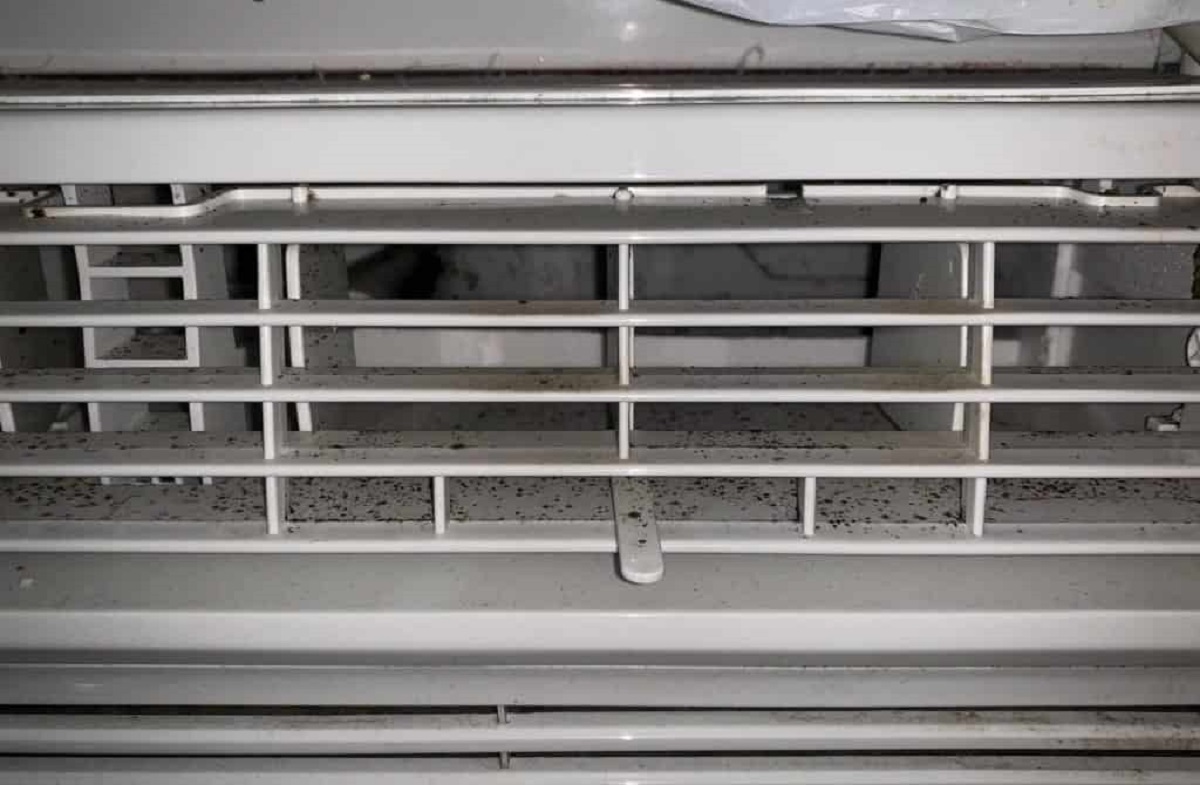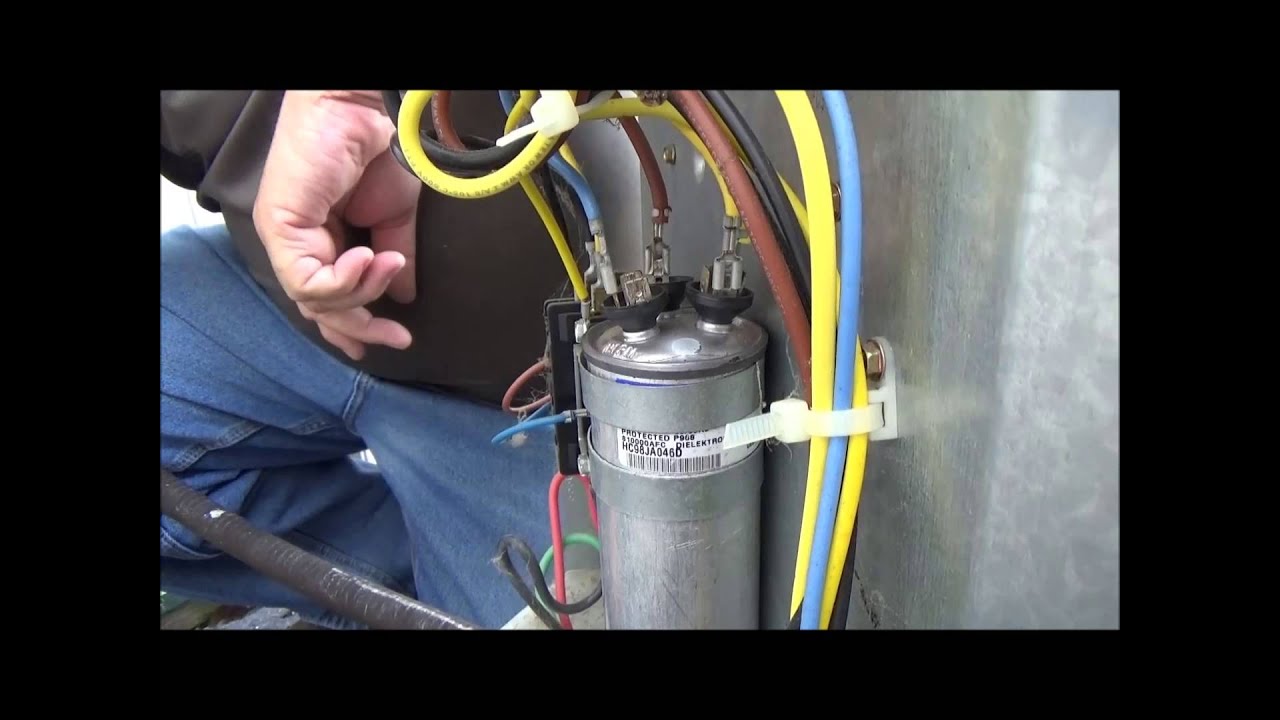Are you facing the frustration of dealing with mold in your AC unit? Fear not, because in this informative article, you will discover effective methods to get rid of mold and ensure your AC unit is clean and free from this common issue. We understand the importance of a healthy and comfortable indoor environment, so let’s dive right in and explore the solutions that will help you eliminate mold in your AC unit once and for all. From simple cleaning techniques to preventative measures, we’ve got you covered. Say goodbye to mold and hello to fresh and clean air!
Inspecting the AC Unit
When it comes to dealing with mold in your AC unit, the first step is to thoroughly inspect the unit for any visible signs of mold. Mold growth can often be seen as dark, discolored patches or spots on the surfaces of the air conditioner. Check both the indoor and outdoor components of the unit, including the evaporator coil, condenser coil, and any other parts that are visible. It is important to address mold growth as soon as possible, as it can not only compromise the efficiency of your AC unit but also pose health risks to you and your family.
Check for Visible Signs of Mold
During the inspection, carefully examine the different components of the AC unit for any signs of mold. Look out for dark patches or spots on the coils, insulation, or other surfaces. If you notice any visible mold growth, it is essential to address it promptly to prevent further spreading of the mold spores.
Examine the Air Filters
Another crucial step in inspecting the AC unit is to examine the air filters. These filters are responsible for trapping dust, allergens, and other particles in the air, and if they are clogged or dirty, they can become a breeding ground for mold. Remove the air filters from the unit and inspect them for any signs of mold growth. If you see mold on the filters, it is an indication that there may be mold spores circulating in your home’s air, which needs immediate attention.
Inspect the Ductwork
In addition to checking the visible parts of the AC unit, it is important to inspect the ductwork as well. Mold can thrive in the damp and dark environment of the air ducts. Inspect the ductwork for any signs of mold, such as a musty odor or visible mold growth. If you notice mold in the ductwork, it is crucial to take necessary steps to clean and sanitize it to prevent the mold from spreading throughout your home.

Cleaning the AC Unit
Once you have completed a thorough inspection of your AC unit and identified any areas with mold growth, it is time to clean the unit. Proper cleaning is essential to remove the mold and prevent it from recurring.
Turn Off the Power
Before you start cleaning your AC unit, it is crucial to turn off the power to ensure your safety. Locate the circuit breaker or the power switch for the unit and switch it off. This step will prevent any accidents or electrical hazards while you clean the AC unit.
Remove and Clean the Air Filters
After turning off the power, remove the air filters from the unit, following the manufacturer’s instructions. Take the filters outside and gently tap them to remove any loose dust or debris. You can also use a vacuum cleaner with a brush attachment to clean the filters more thoroughly. Once the filters are clean, inspect them again for any signs of mold growth. If you notice any mold, it may be necessary to replace the filters to ensure the air circulating in your home is clean and mold-free.
Clean the Ductwork
To effectively clean the ductwork, you can use a vacuum cleaner with a brush attachment or a specially designed duct cleaning tool. Start by vacuuming the accessible areas of the ducts to remove any loose debris and dust. Then, use the brush attachment to scrub the duct walls and dislodge any stubborn mold or dirt. Be thorough in your cleaning process, ensuring you cover all the sections of the ductwork. If you feel uncomfortable or unsure about cleaning the ductwork yourself, it is recommended to hire a professional duct cleaning service to ensure the job is done properly.
Sanitize the AC Unit
After cleaning the visible parts of the AC unit, it is important to sanitize it to kill any remaining mold spores. There are various effective sanitizing solutions available on the market specifically designed for HVAC systems. Follow the manufacturer’s instructions for the chosen sanitizer, ensuring you apply it to all the components of the AC unit. Sanitizing the unit will not only eliminate any remaining mold spores but also help prevent future mold growth.

Preventing Mold Growth in the AC Unit
Once you have successfully cleaned and sanitized your AC unit, it is crucial to take preventive measures to avoid mold growth in the future. Mold thrives in damp and humid environments, and your AC unit can provide an ideal breeding ground if certain conditions are not managed properly.
Control the Indoor Humidity
One of the key factors in preventing mold growth is controlling the indoor humidity levels. Ideally, the humidity in your home should be kept between 30% to 50%. To achieve this, consider using dehumidifiers in areas prone to excess moisture, such as basements, bathrooms, or laundry rooms. Additionally, ensure proper ventilation in these areas, as stagnant air can contribute to high humidity levels. By maintaining optimal humidity levels, you can significantly reduce the risk of mold growth in your AC unit.
Ensure Proper Ventilation
Proper ventilation is essential to prevent moisture buildup and reduce the chances of mold growth. Ensure that your AC unit is properly vented to the outside, allowing moist air to escape. Additionally, make sure that all areas of your home, including bathrooms and kitchens, have adequate ventilation systems in place. Good ventilation helps to minimize condensation, keeping the air fresh and preventing excessive moisture from accumulating in your AC unit.
Use Mold-Resistant Materials
When it comes to repairs or renovations in your home, consider using mold-resistant materials. These materials are designed to resist mold growth and can be particularly useful when replacing insulation or dealing with areas exposed to moisture. Mold-resistant drywall and paint are excellent options for areas prone to mold, as they provide an extra layer of protection against mold growth.
Schedule Regular Maintenance
Regular maintenance of your AC unit is crucial for detecting and addressing any potential mold issues early on. Schedule regular inspections and maintenance appointments with a qualified HVAC technician. They will be able to identify any signs of mold growth, clean the unit, and make necessary repairs or adjustments to ensure optimal performance. By staying proactive, you can prevent mold growth in your AC unit and prolong its lifespan.

Seeking Professional Help
While some mold issues in your AC unit can be effectively addressed through DIY cleaning and preventive measures, there may be instances where professional help is warranted.
Hire a Professional Mold Remediation Service
If you are dealing with extensive mold growth or are unsure of how to effectively remove mold from your AC unit, it is recommended to hire a professional mold remediation service. These professionals have the necessary knowledge, expertise, and equipment to handle large-scale mold removal projects safely and effectively. They will assess the extent of the mold problem, contain the affected area, remove the mold, and take necessary steps to prevent future mold growth.
Consult an HVAC Technician
If you notice persistent mold growth in your AC unit despite your best efforts to clean and prevent it, it is advisable to consult with an HVAC technician. They can thoroughly inspect your AC unit, identify any underlying issues contributing to mold growth, and provide appropriate solutions. Additionally, an HVAC technician will be able to advise you on any necessary repairs or replacements that may be required to ensure the smooth and efficient operation of your AC unit.
In conclusion, addressing mold growth in your AC unit is crucial for the efficient and safe functioning of your cooling system. By regularly inspecting the unit, cleaning it properly, taking preventive measures, and seeking professional help when needed, you can ensure a mold-free and comfortable indoor environment. Remember to prioritize your health and the well-being of your family by promptly addressing any signs of mold growth in your AC unit.






